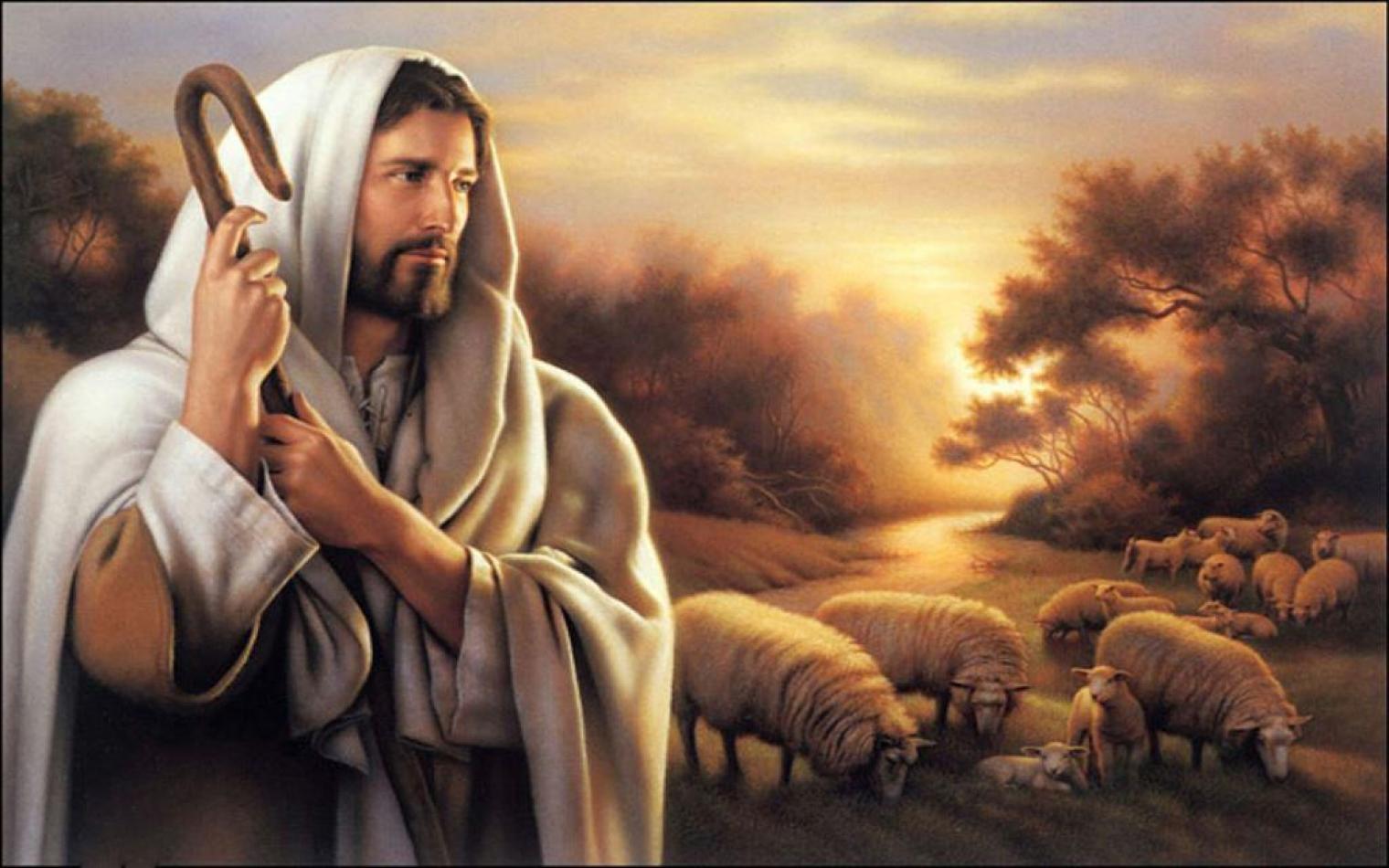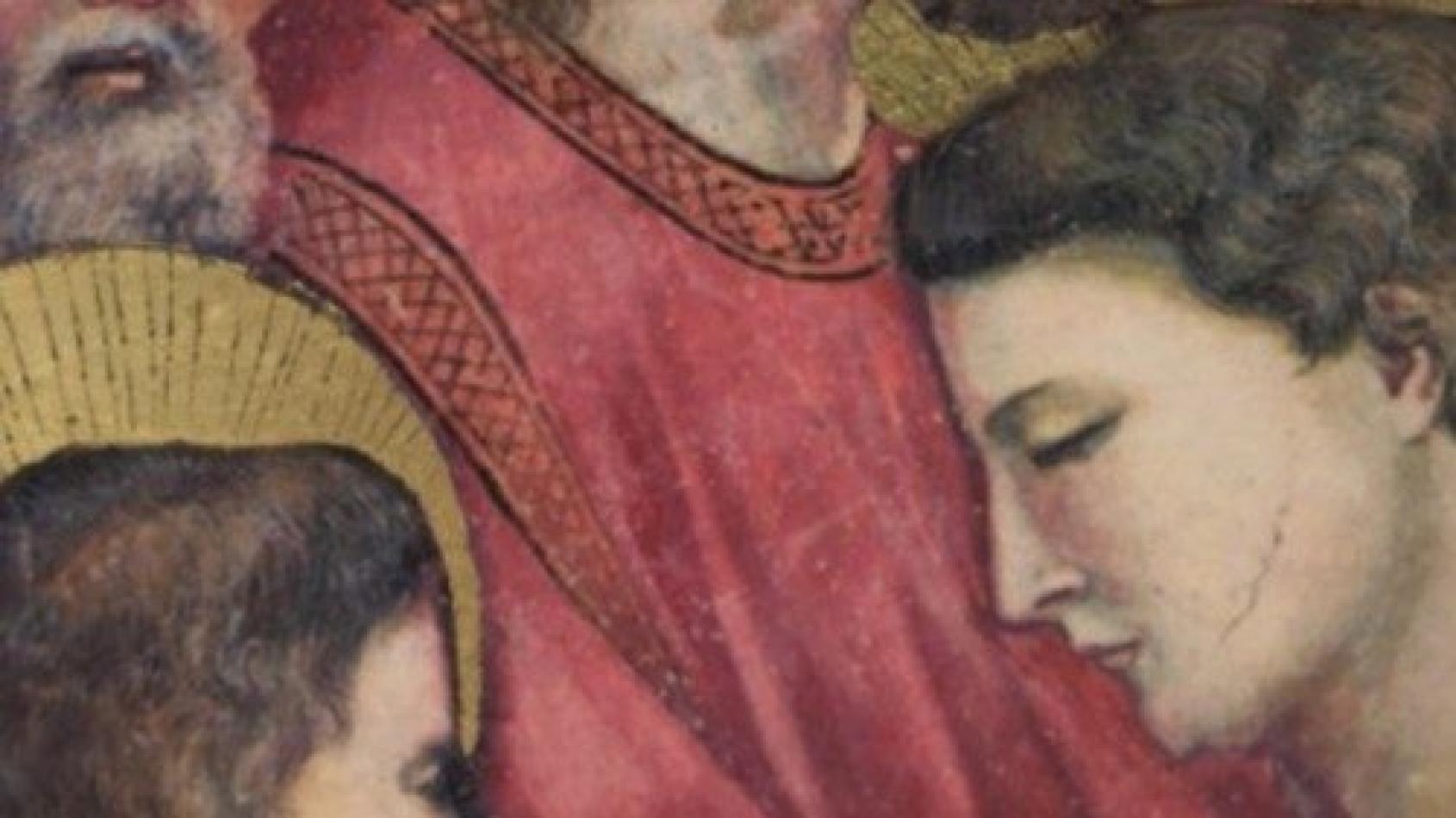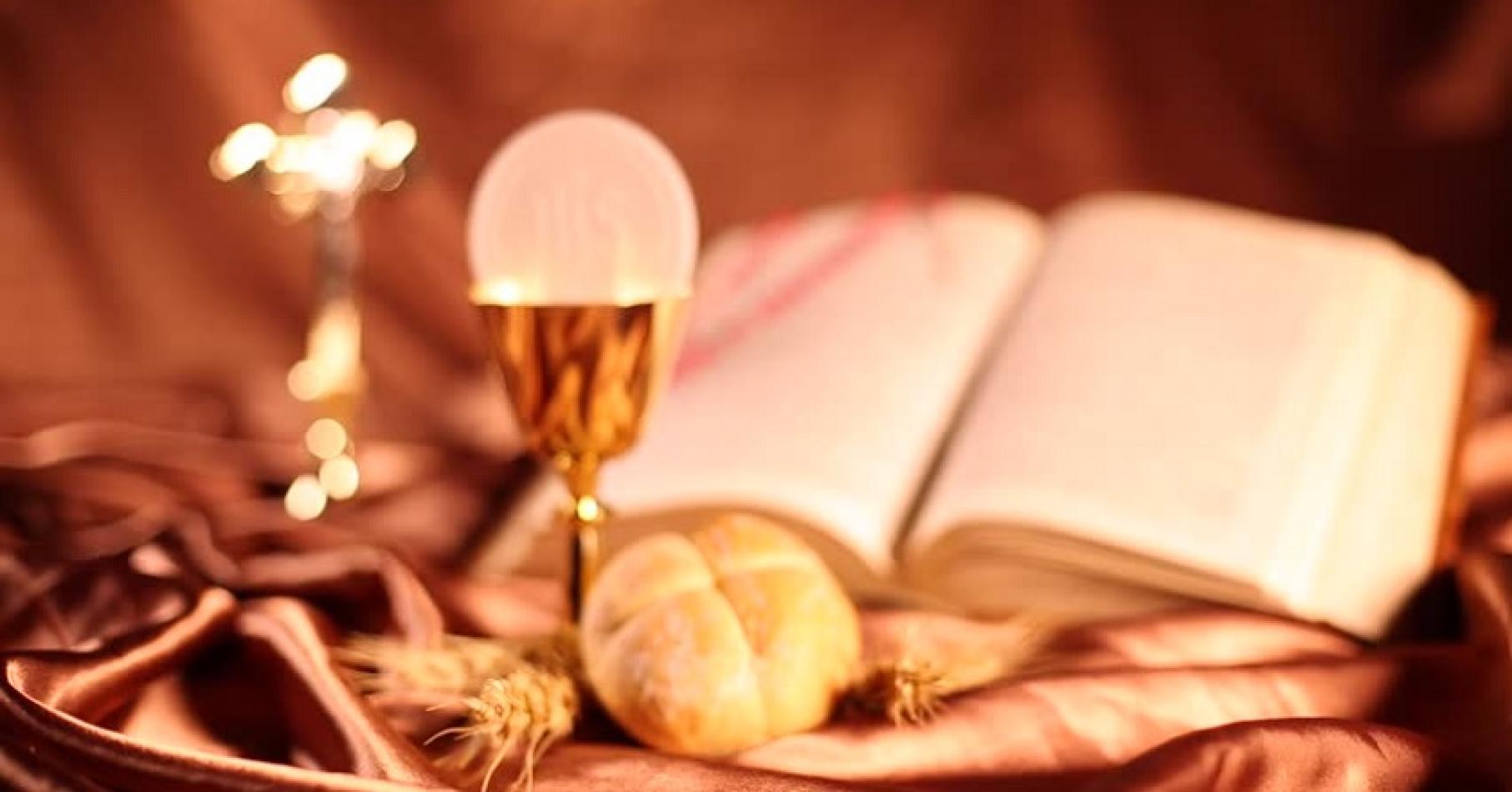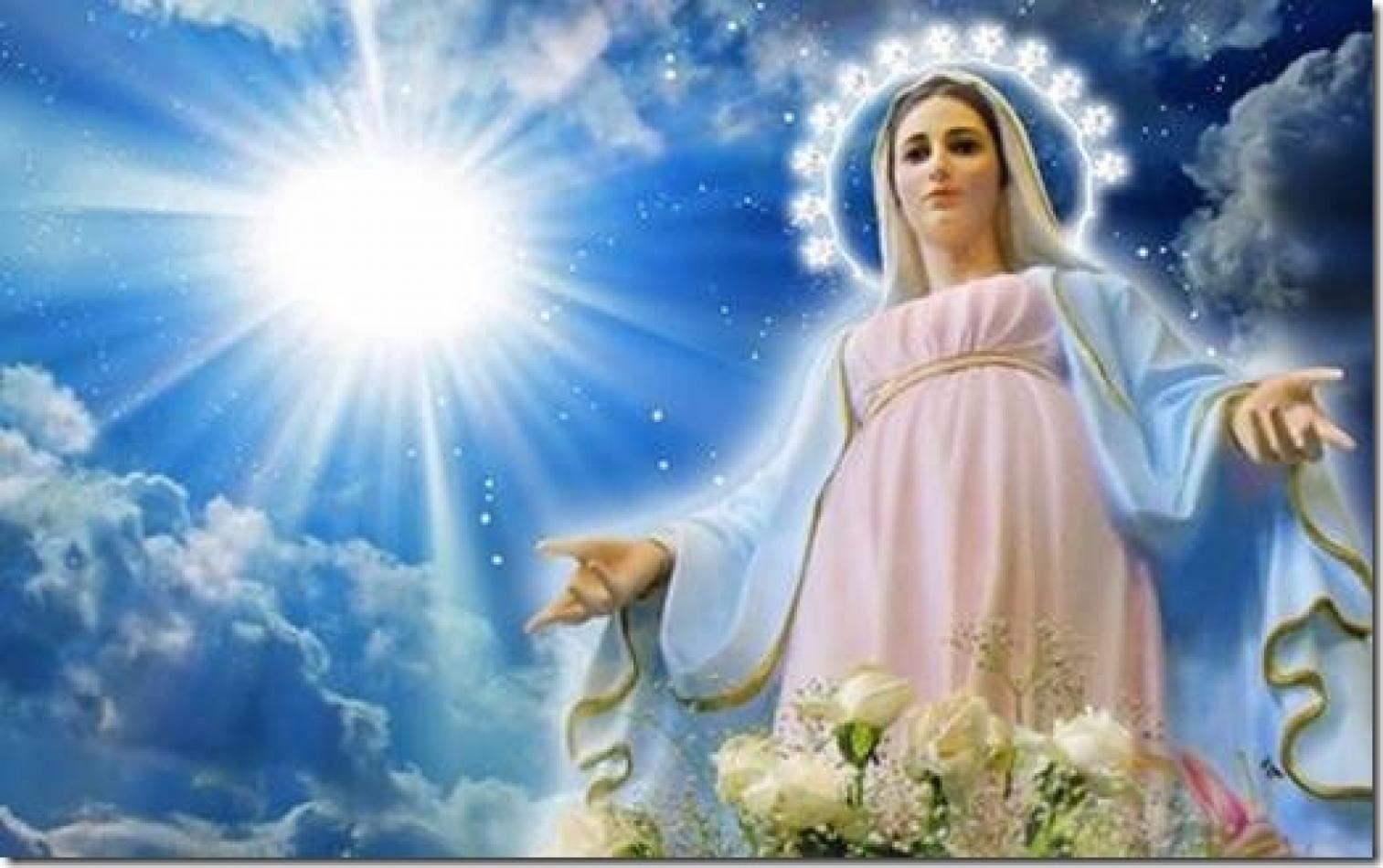Daniel Comboni
Comboni Missionaries
Institutional area
Other links
Newsletter
We are now at the fourth Sunday of Easter. Every year on this Sunday, we read a passage from chapter 10 of the Gospel of John, in which Jesus, through an allegory, presents himself as the Good Shepherd. For this reason, it is known as “Good Shepherd Sunday”.
The Good, Beautiful, and Strong Shepherd
“No one shall snatch them out of my hand.”
John 10:27-30
We are now at the fourth Sunday of Easter. Every year on this Sunday, we read a passage from chapter 10 of the Gospel of John, in which Jesus, through an allegory, presents himself as the Good Shepherd. For this reason, it is known as “Good Shepherd Sunday”.
1. The GOOD Shepherd
The allegory of the shepherd requires, first of all, the effort to place ourselves in a context far removed from our own time in order to grasp Jesus’ message. Indeed, no one really wants to be a “sheep” or part of a “flock” — and yet, in many ways, that is precisely what we are! Only today, “shepherds”, “sheep”, and “flocks” go by different names: leaders, sports idols, media gurus, influencers, fans, supporters, populists…
In any case, this is a rather strange shepherd, for no one would normally give their life for a sheep. And yet this shepherd becomes a lamb himself, offering his life as food for the flock: “The Lamb at the centre of the throne will be their shepherd and will guide them to springs of the water of life” (Revelation 7, second reading).
In conjunction with the Gospel of the “Good Shepherd”, today the Church also observes the World Day of Prayer for Vocations, instituted by Pope Paul VI in 1964. The theme this year, proposed by Pope Francis (whose message was signed on 19 March while he was in hospital at the Gemelli), is: “Pilgrims of hope: the gift of life.” Pope Francis begins his message with these words: “On this, the 62nd World Day of Prayer for Vocations, I wish to extend to you a joyful and encouraging invitation to become pilgrims of hope by generously offering your lives as a gift.”
To give one’s life generously is the ultimate sign of love: it is what the Good Shepherd did, and it is the same calling for all who walk in his footsteps.
Last Sunday, we heard Jesus ask Simon Peter three times: “Feed my lambs”, as a sign of love. Jesus entrusted Peter with his own messianic title of Shepherd (Jn 21:15–19). Yet with the solemn “Follow me” (Jn 21:19), Jesus made clear that Peter’s task would always be vicarious.
“There will be one flock, one shepherd” (Jn 10:16). Peter, shepherd under the Shepherd, was called to tend the flock entrusted to him, giving his life like Jesus — becoming himself a sacrificial lamb. Peter did this. So did Francis. And so too must Pope Leo.
The image of the shepherd is rooted in a long and rich biblical tradition (especially in the Prophets and the Psalms), which the New Testament takes up anew: Jesus is “the great Shepherd of the sheep” (Hebrews 13:20). It is no surprise, then, that the earliest artistic depiction of Jesus found in the catacombs is that of the “Good Shepherd”, centuries before the crucifix. The Good Shepherd is “the gentle version of the Crucified One”. Gentle in image only, for the essence is the same (D. Pezzini).
2. The BEAUTIFUL Shepherd
“I am the Good Shepherd!” It’s worth noting, however, that the Greek adjective used by the evangelist is not agathós (good), but kalós, meaning beautiful. So, the literal translation would be: “I am the beautiful shepherd.”
This offers us a different angle on goodness: goodness makes a person beautiful, and beauty radiates their inner goodness (Plato). Jesus is the epiphany not only of goodness but of beauty.
God is Love because he is Beauty, and he is Beauty because he is Love.
“Beauty and goodness intertwine. […] In the Old Testament, the adjective tôb appears 741 times, and its meaning shifts between ‘good’ and ‘beautiful’, showing how ethics and aesthetics are two sides of the same reality.” (Gianfranco Ravasi)
The world needs beauty. “Often humanity loses sight of true beauty; it becomes enthralled by what is flashy, turning beauty into spectacle, a commodity, surrendering to what is instantly consumable. Transfigured and crucified beauty redeems us from the seduction of the fleeting.” (Lucia Antinucci)
3. The STRONG Shepherd
Today’s Gospel passage is very short, just four verses, and is not directly linked to the allegory of the Good/Beautiful Shepherd. We are in Jerusalem during the Feast of Dedication. It is winter, and Jesus is walking in the Temple. His adversaries gather around him and challenge him: “How long will you keep us in suspense? If you are the Christ, tell us plainly.” Jesus replies: “You do not believe because you do not belong to my sheep.” (Jn 10:22–26)
We are, then, in a context of conflict and tension. In fact, the scene ends with the “Jews” attempting to seize and stone Jesus (Jn 10:31,39).
We often associate the figure of the Good Shepherd with the tender image of the shepherd carrying the lost sheep on his shoulders (Lk 15:4–7). There is, no doubt, a connection — but today’s passage presents a far more dramatic context. Jesus speaks of laying down his life (an expression repeated in chapter 10), of fighting off ravenous wolves, and of confronting thieves and robbers.
What we need is a strong shepherd. A shepherd like David, able to face lions and bears to protect his flock (1 Sam 17:34–37).
This is the aspect that today’s Gospel highlights: “I give them [my sheep] eternal life, and they shall never perish. No one shall snatch them out of my hand.”
Jesus adds the reason why we are secure in his hands: “My Father, who has given them to me, is greater than all, and no one can snatch them out of the Father’s hand. The Father and I are one.”
We often feel besieged by problems that steal our peace and joy. Sometimes, we feel as though we are living in a society of “thieves and robbers”, where everyone looks out for themselves, and we grow distrustful. At other times, we feel as though we are being hunted by ravenous wolves — living in fear and anxiety.
The strong Shepherd reassures us that, if we follow him, nothing and no one can snatch us from his hand. Faith — trust in him — allows us to cry out with St Paul:
“Who will separate us from the love of Christ? Trouble? Hardship? Persecution? Famine? Nakedness? Danger? Sword? … No, in all these things we are more than conquerors through him who loved us. For I am convinced that neither death nor life, neither angels nor demons, neither the present nor the future, nor any powers, neither height nor depth, nor anything else in all creation will be able to separate us from the love of God that is in Christ Jesus our Lord.” (Romans 8:35–39)
Fr Manuel João Pereira Correia, mccj
It’s nice to be carried, but by whom?
Gospel reflection – John 10: 27-30
The land of Israel is in large part mountainous and used for grazing sheep. Keepers of flocks were Abel, Abraham, Jacob, Moses, David. It should not, therefore, cause consternation that there are recourses to images of pastoral life in the Bible. God is called “shepherd of Israel”: he leads his people like sheep, treats them with love and care, guides them toward abundant pastures and fresh springs of water (Ps 23:1; 80:2). Even the Messiah is announced by the prophets as a shepherd to shepherd Israel: “The day is coming when I will raise up a king who is David’s righteous successor. He will rule wisely and govern with justice and righteousness.” (Jer 23:1-6; Ezk 34).
Jesus will refer to these images when one day, descending from the boat, he sees a great crowd rushing on foot to listen to him a word of hope. Mark says: “he had compassion on them for they were like sheep without a shepherd” (Mk 6:33-34).
In John’s Gospel, Jesus presents himself as the expected shepherd (Jn 10:11.14), as the one who will lead the people along the path of righteousness and faithfulness to the Lord.
The fourth Sunday of Easter is called the Sunday of the Good Shepherd because in it, every year, the liturgy presents a passage from John chapter 10 in which Jesus presents himself as the true shepherd. The four verses that we read in the Gospel today are drawn from the final part of the speech of Jesus and they want to help us deepen the meaning of this biblical image.
We begin with a clarification: when we talk about Jesus the Good Shepherd the first image that comes to mind is that of the Master who holds a lamb in his arms or on the shoulders. It is true: Jesus is the good shepherd also in the way that he goes in search of the lost sheep, but this is the reproduction of the parable found in the Gospel of Luke (15:4-8). The good shepherd spoken of in the Gospel of John has nothing to do with this sweet and tender image. Jesus does not present himself as one who affectionately caresses the wounded lamb, but as the hard, strong man, decided to fight against the bandits and ferocious animals, as did David chasing the lion and the bear that tore away a sheep from the flock; he knocked them down and plucked the victim from their mouth (1 S 17:34-35). Jesus is the Good Shepherd because he is not afraid to fight untill he gives his life for the sheep that he loves (Jn 10:11).
The first statement that he does is very strong: my sheep—he says—“they shall never perish; no one will ever steal them from me” (v. 28). Their salvation is not guaranteed by their docility, their loyalty, but by his initiative, his courage, and his gratuitous and unconditional love. This is the big announcement! This is the beautiful news that comes from Easter and the Christian believer must communicate to every person. Even to those who have it all wrong in life, he must ensure: your miseries, your shortcomings, your choices of death will not be able to defeat the love of Christ.
The second image that of the sheep, is to be clarified because it can provoke some discomfort. The flock following the “Good Shepherd is composed of whom?” Some will perhaps spontaneously answer: lay people who meekly accept and practice all the norms established by the clergy. Pastors are therefore the church hierarchy, while sheep would be the ordinary faithful.
We make it clear: the only shepherd is Christ, and he is because—as we pointed out in the Second Reading—he is the Lamb who has sacrificed his own life. His sheep are those who have the courage to follow him in this gift of life. The shepherd is then a Lamb that shares in all the fate of the flock.
There is another misconception that should be dissolved, to identify themselves with the flock of Christ. There are gray areas in the Church who exclude themselves from the Kingdom of God because they thrive in sin, while there are huge margins, beyond the confines of the Church, which fall within the Kingdom of God because the Spirit is at work there. The action of the Spirit manifests itself in the impulse of the gift of life to the brother or sister: “The one who lives in love lives in God and God in him” (1 Jn 4:16). Whoever, while not knowing Christ, sacrifices himself for the poor, practices justice, brotherhood, sharing of goods, hospitality, loyalty, sincerity, the rejection of violence, forgiveness of enemies, the commitment to peace can be a disciple of the Good Shepherd. This should make so many Christians, who are wallowing in auto complacency that might eventually prove tragic illusions, attentive. The Shepherd may one day, unexpectedly say to some: “I do not know where you come from” (Lk 13:25).
The display of security, preconceived distrust against members of other religions and prejudices toward non-believers are still so deeply rooted and pernicious as the false irenicism.
How can people become members of the flock that follows Jesus? What happens to the sheep who are faithful to him? Today’s Gospel says that it is not we who take the initiative to follow him. He is the one who calls: “My sheep hear my voice and I know them and they follow me” (v. 27).
The disciples of Jesus live in this world, living among people. They hear so many calls and receive even misleading messages. There are many who pose as shepherds, that promise life, well-being, happiness and invite people to follow them. It is easy to be deceived by charlatans. How to recognize among many voices, that of the true Shepherd? It is necessary to accustom the ear. He who hears a person only for five minutes and then for a year does not hear him anymore, will find it difficult to distinguish the other’s voice in the crowd. He who hears the Gospel only once a year does not learn to recognize the voice of the Lord who speaks.
It is not easy to trust Jesus because he does not promise success, triumphs, victories, as do all the other shepherds. He asks for the gift of self, demands the renunciation of seeking one’s own advantage, demands the sacrifice of life. And yet—he assures—this is the only path that leads to eternal life (vv. 28-29). There are no shortcuts; who indicates other paths is cheating and leads to death.
The passage ends with the words of Jesus: “I and the Father are one” (v. 30). This, a bit abstract sentence, indicates the path to follow to achieve unity with God. It is necessary to become “one” with Christ. This means that one has to achieve unity of thoughts, intentions, and actions with him.
This statement makes us reflect on the ministry of those who are called to “graze” the flock of Christ. Sometimes in the Christian community, there is a certain tension between those who, with not very exact terms, are called: clergy and laity. Some say that the laity must be united with their “shepherds”; others say that these shepherds must be united with the people of God. Perhaps it is more correct to think that all the people of God, laity and clergy, together should follow the only Shepherd who is Jesus and become, with him, “one” with the Father.
Fernando Armellini
Italian missionary and biblical scholar
https://sundaycommentaries.wordpress.com




